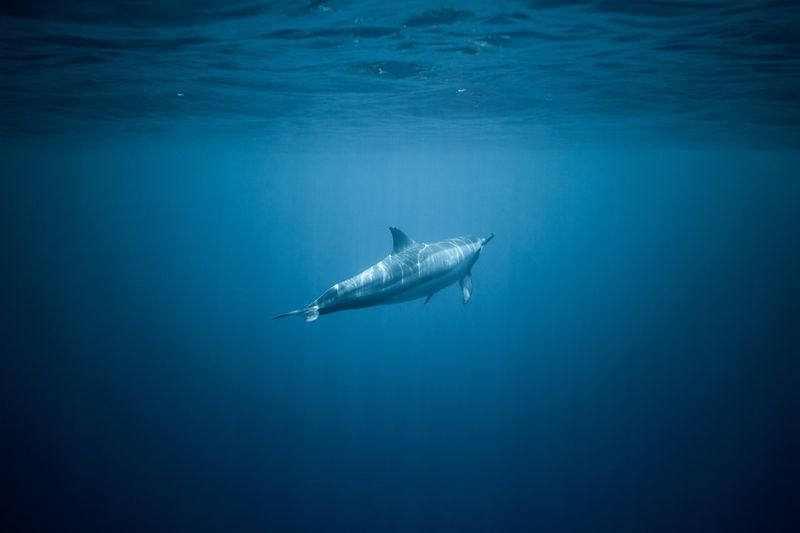Explained: Why Does a Submarine Implode and What Follows?
The Tragic Incident
The recent implosion of the deep-sea exploration mini-submarine Titan, some 1600 meters away from the wreckage of the Titanic, has left the world in shock and mourning. This catastrophic event claimed the lives of five individuals including Hamish Harding, a British aviator, Paul-Henri Nargeolet, a French explorer, Shahzada Dawood, a British-Pakistani businessman, his son Suleman Dawood, and Stockton Rush, the CEO of OceanGate. The submersible had lost communication with its mother ship, leading to a search and rescue mission involving international teams.
The Challenges of Deep-Sea Exploration
The perils associated with deep-sea exploration are evident from this tragic incident. Despite advancements in technology and safety measures, the complexities involved cannot be overlooked. As the search and rescue expedition delved deeper into the ocean’s abyss, the challenges grew significantly. The immense pressure, total darkness, and expansive search area posed obstacles that were difficult to overcome.
Immense Water Pressure
Deep-sea exploration encounters immense water pressure that increases with depth. When a submarine or submersible goes beyond its designated dive depth, the overwhelming water pressure becomes too much for the vessel’s superstructure to handle, leading to an implosion. To put it into perspective, think of crushing a soft-drink or soda can in your hand. The same principle applies when the hull of a submarine is crushed under the extreme pressure of the water.
The water pressure experienced at depths exceeding 800 feet is approximately 80 times the atmospheric pressure at the surface. This colossal water pressure poses a significant challenge to any exploratory activities or human presence in the deep-sea environment.
The Implications for the Human Body
The exact details of what happens to the human body in such deep-sea implosions are still not fully understood. However, the extreme water pressure combined with rapid changes in pressure can have severe consequences. Air-filled spaces within the body, such as the lungs and sinuses, may collapse under the immense pressure, causing severe injury or even fatality. This is similar to decompression sickness, commonly known as bends, which occurs when dissolved gases in the body’s bloodstream form bubbles, leading to serious health issues.
Other concerns include nitrogen narcosis, a condition experienced by divers at deep depths that impairs cognitive function, similar to being under the influence of alcohol. Oxygen toxicity is also a concern, as exposure to high levels of oxygen under certain conditions can lead to seizures or other harmful effects. Additionally, the extremely cold temperatures in deep-sea environments can potentially cause hypothermia, further endangering human life.
The Consequences of an Implosion
The consequences of an implosion or breach of a submersible at extreme depths are devastating. The sudden and immediate change in pressure can cause the air inside the submarine to rapidly compress, resulting in a spike in temperature that may cause severe burns or other thermal injuries to the individuals within the submersible.
During an implosion at such depths, the fate of those inside a submarine would undoubtedly be immediate death. The intense compression forces and shockwave generated by the implosion would allow no chance for survival.
It is important to note that while the implosion itself may be instantaneous and powerful, the individuals inside the submersible are unlikely to feel any pain as death would be immediate.
Editorial: The Risks and Rewards of Deep-Sea Exploration
This tragedy serves as a stark reminder of the inherent risks involved in deep-sea exploration. Despite advancements in technology and safety measures, the depths of the ocean continue to present challenges that are difficult to overcome. The pursuit of knowledge and discovery comes at a price.
While the implosion of the Titan raises questions about the safety protocols and equipment used in deep-sea exploration, it is crucial to remember the immense contributions this field has made to our understanding of the world beneath the waves. Through deep-sea exploration, we have gained vital knowledge about marine ecosystems, geology, and even human history through the exploration of shipwrecks like the Titanic.
It is imperative that we learn from this tragedy and strive to improve safety measures and protocols to mitigate the risks associated with deep-sea exploration. The courage and passion of individuals like Hamish Harding and the entire crew of the Titan should not be forgotten. They ventured into the unknown, pushing the boundaries of human exploration, and paid the ultimate price.
Advice: Caution and Care in Deep-Sea Exploration
To prevent future tragedies, it is essential for deep-sea exploration companies and researchers to prioritize safety above all else. This includes rigorous testing of equipment, thorough training of personnel, and a comprehensive understanding of the risks involved. Regular monitoring and maintenance of vessels and submersibles are paramount to ensure their structural integrity under extreme conditions.
Additionally, governments, regulatory bodies, and industry experts should collaborate to establish and enforce safety standards for deep-sea exploration. This will help create a framework that safeguards the lives of those involved and ensures that exploration is conducted responsibly and sustainably.
While the risks of deep-sea exploration cannot be eliminated entirely, they can be mitigated through careful planning, preparation, and adherence to safety protocols. By taking a cautious and measured approach, we can continue to explore the mysteries of the deep sea while minimizing the potential for tragic incidents like the implosion of the Titan.
In conclusion, deep-sea exploration is a field that demands respect and caution. It is our responsibility as a society to support and encourage the pursuit of knowledge, while also prioritizing the safety and well-being of those who venture into the depths. Let us honor the memory of those who have lost their lives by learning from their sacrifice and striving for a better and safer future in the world of deep-sea exploration.

<< photo by Jeremy Bishop >>
The image is for illustrative purposes only and does not depict the actual situation.
You might want to read !
- “Rising Star or Risky Bet? Unveiling the Enigma of Cleveland Cavaliers’ 2023 Draft Pick Emoni”
- “Mysterious Disappearance: TechnipFMC’s Vessel Joins the Search for Missing Titanic Submarine”
- “A Deeply Troubling Discovery: Debris from Vanished Submarine Unearthed Near Titanic Relics”
- “Delving into the Depths: Unraveling the Titan Investigation”
- The TikTok Effect: Uncovering the True Cause of the Submarine Incident.




